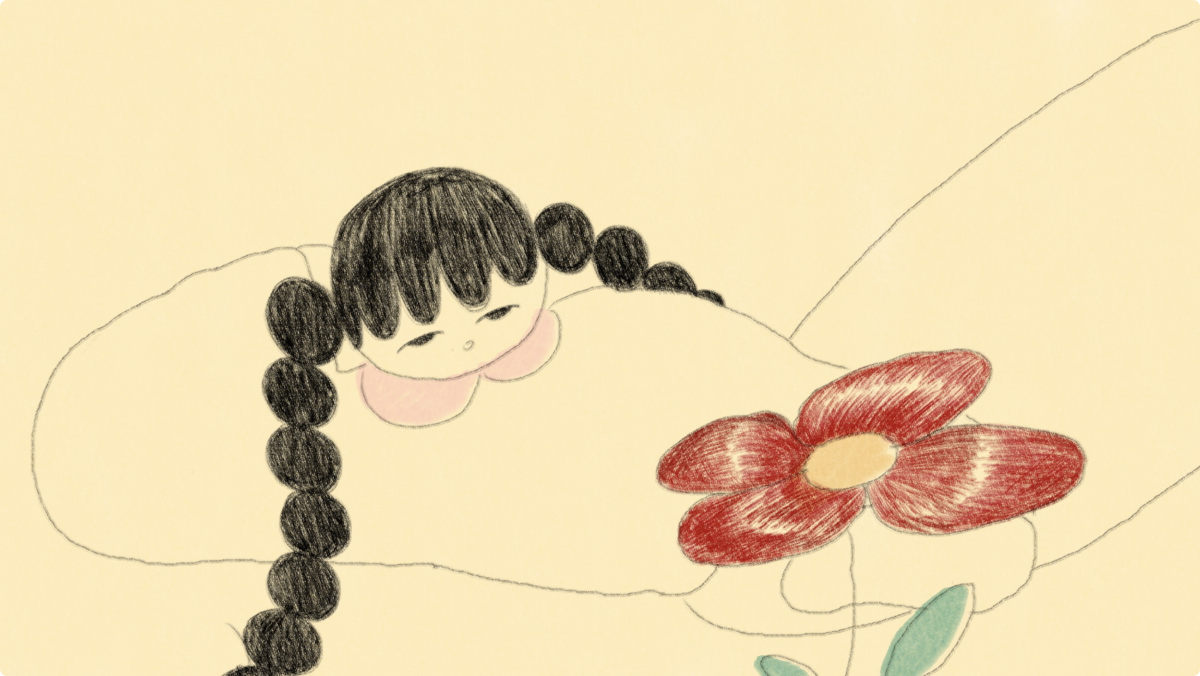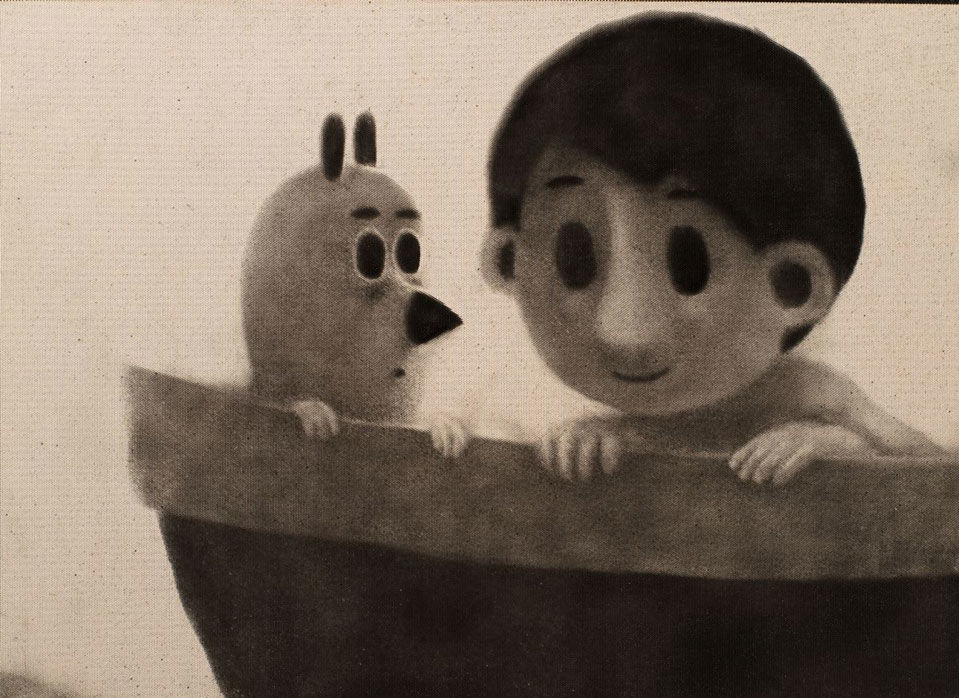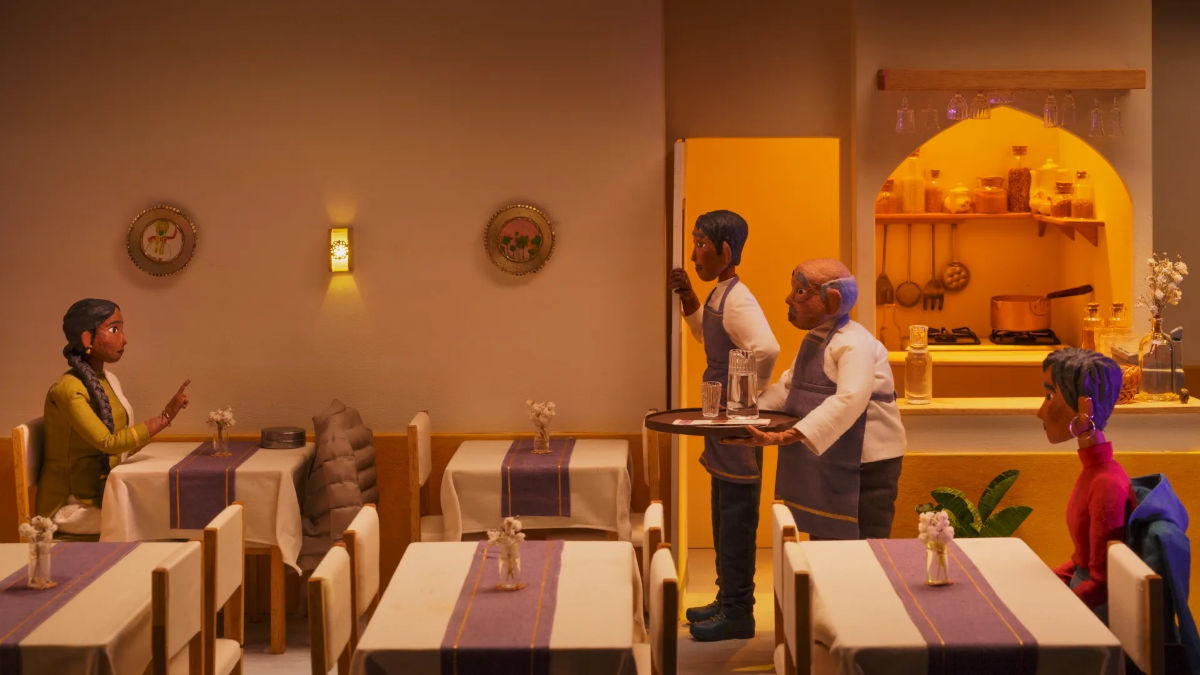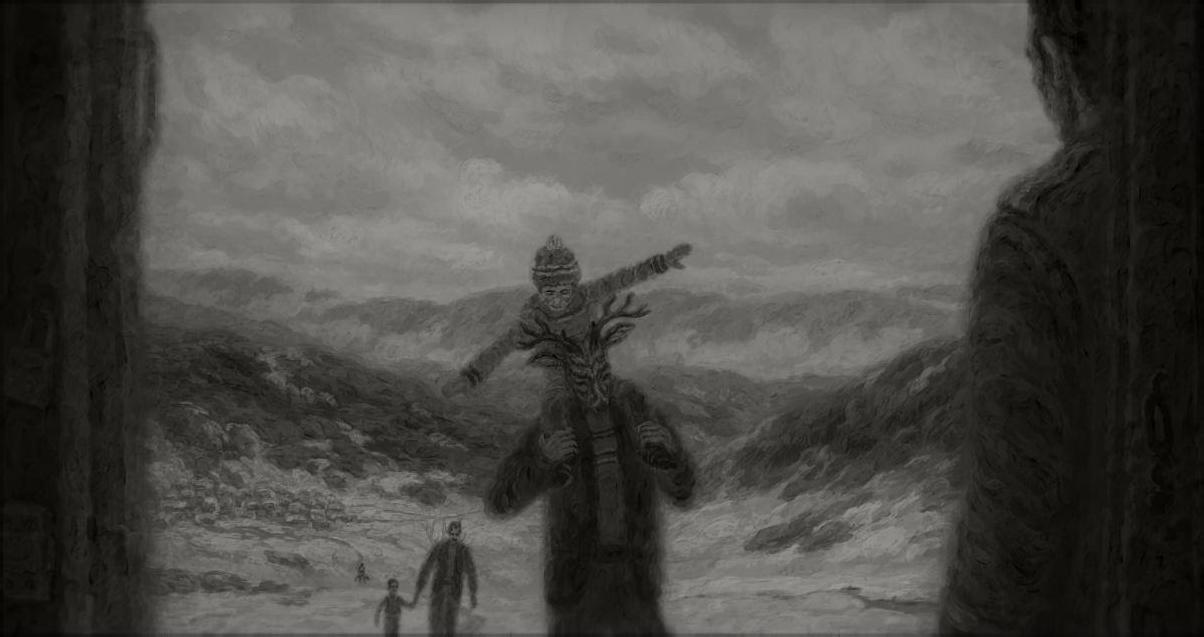Independent Animation Shorts
The Blind Writer by Georges Sifianos
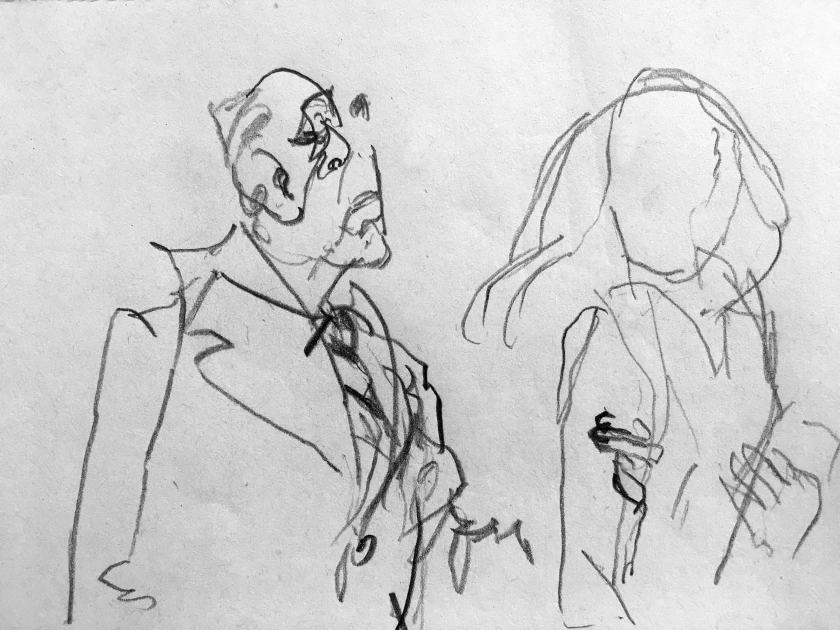
Paris-based, Greek animation director, artist and University teacher Georges Sifianos a well-known name in the animation world. His activities in filmmaking start with his 1974 Smile film and proceed in animation with Scent of City - 1994, Tutu (co-directed with Pascal Dalet), Ego (2007). He has taught (since 1994) at ENSAD -École nationale supérieure des Arts Décoratifs, and his very active scholarly career includes a Norman McLaren-Evelyn Lambart award for the Best Scholarly Book in animation (2014, with Esthétique du cinéma d’animation). His new film, The Blind Writer, was just being completed.
The drawings of this film were made blindfolded, that is, without looking at them while drawing but using only tactile cues. This challenge reflects the writer’s dilemmas facing ideological certainties. In a world of communication, where custom images and opinions are constructed, how can one discern the essential? What is seeing anyway? Appearances, do they correspond to reality? - Film Synopsis
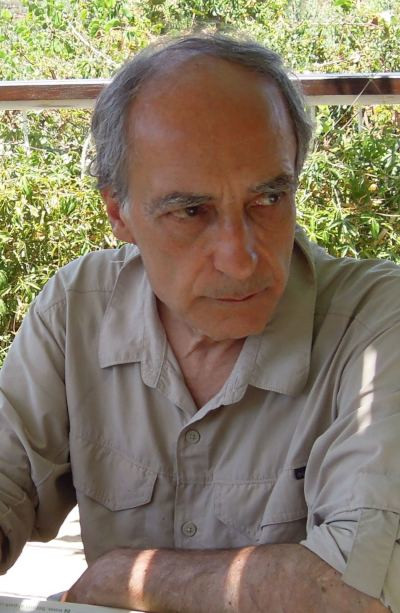
Sifianos is straightforward in his answers even when introducing the film itself. “The blindness of the writer is the metaphor of uncertainty on how our world evolves. Why do people decide against their own interest? Why this ecologic crisis which does so much damage and perhaps will destroy life on the earth?” This impending catastrophe brings forward epistemological questions, which work better than all certitudes of politics and religion. Sifianos’ central questions are based on the famous Socratic ignorance (‘I know one thing, that I know nothing’), and makes the creator the unknown but acting author.
The central character in The Blind Writer, according to Sifianos, is the opposite of the fanatic whose fixed ideas (dogmatism) lead to inadequate responses when seriously challenged; these inadequate responses in turn create more questions leading to a mise en abyme, tiredness and finally oblivion. Take for instance, the argument about our complex world, which is in need of a creator, which in turn necessarily (logicaly) requires another creator and so on. Or the fake logic argument that because an idea has many followers (as religious ideas usually do), then it has to be statistically right -simply because of its followers' size. In contrast, the blind writer is the spirit who seeks understanding beyond the fake reasoning and ready-made platitudes.
Watch Excerpts from The Blind Writer
The Blind Writer had the director himself being blindfolded using only tactile cues on paper to make his drawings, and then create the famous ‘movement between the frames’. “I wanted to question our own method, our animation language. Industrialisation creates dogmas, a kind of violence; it tries to establish models”. His first exposure to blindness came when he was studying at the Sorbonne University in France; one of his classmates was Evgen Bavčar, a Slovenian who lost his vision young, but studied and became a well-known blind photographer. Sifianos used the technique of blind acting to his subsequent ENSAD students, where he had the move around, walk, draw and animate with their eyes closed (results were subsequently collected and exhibited in various animation colloquia, including Animafest Scanner at Zagreb). “The drawing becomes more sensitive and less cerebral in that way”.
This is the exact process of how The Blind Writer was made:
I use prepared papers and tools I conceived. I create a video-model on which a simple grid is drawn.
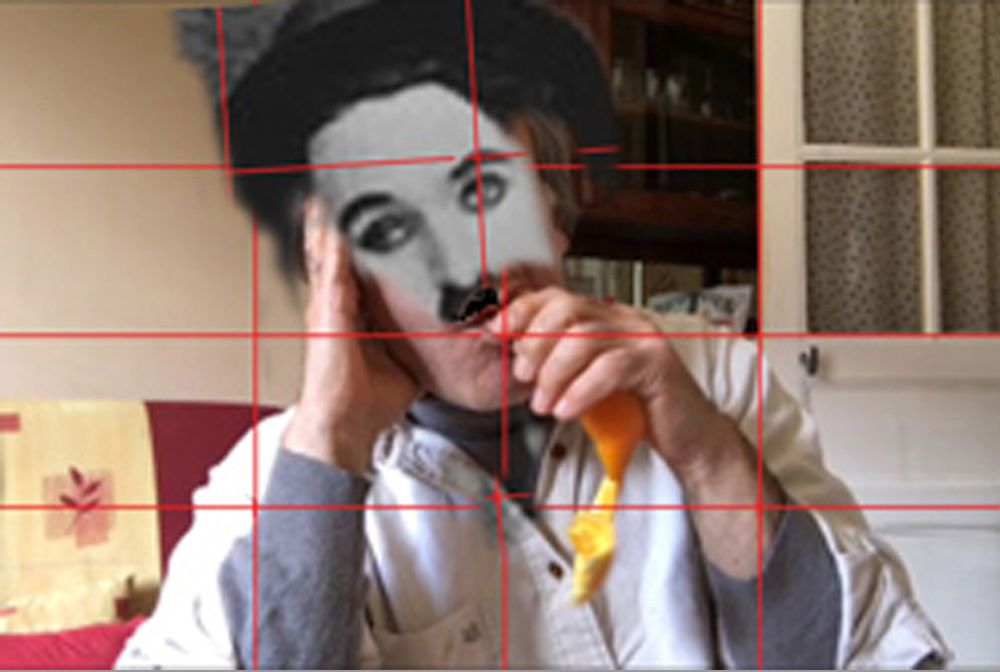
When animating, I look at this model but never on my drawing. Videos are also prepared. Apart from the grid and hybrid models I create digitally, I keep only 1 every 2, 3 or 4 images of videos. As vibrations are violent, it is more interesting to work with fewer frames/second. Perception needs a delay; otherwise, the screening becomes very tiring. I try to copy frame by frame the video, looking at the image but not looking at the drawing. A disc prevents me from looking at it.
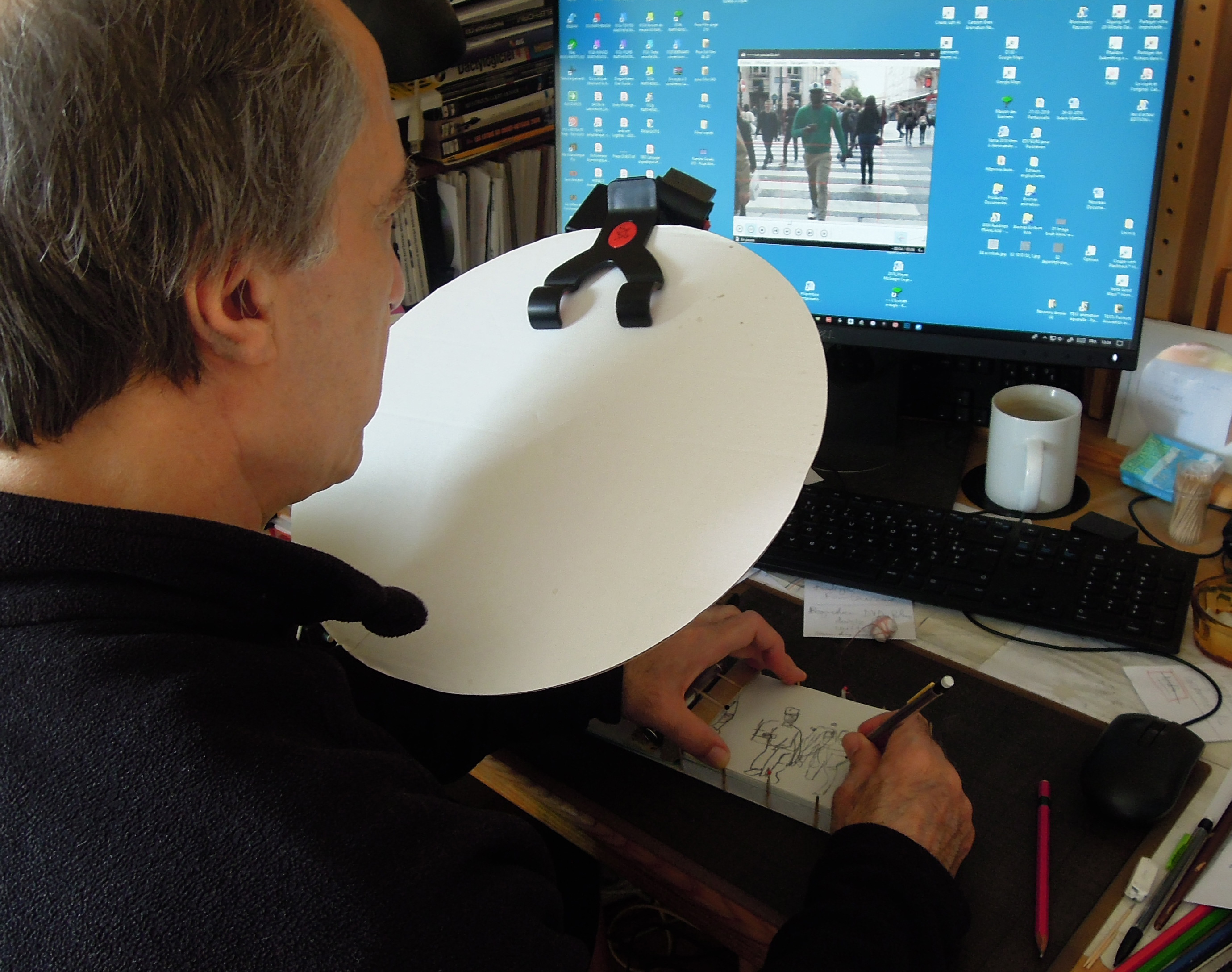
The papers are small and prepared: I drill pin holes by the rear of the paper, giving a small relief, like in Braille. I also use a small support with other marks on the borders of the paper. The pinholes and border repairs correspond to the grid on the screen.
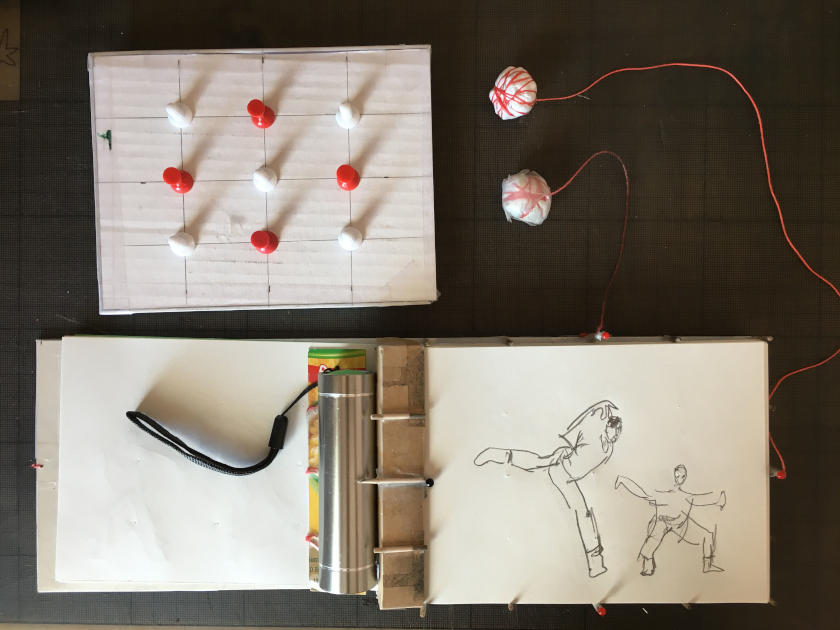
During drawing, I try to match forms following these landmarks. But this …never happens! Every drawing is a surprise. Sometimes, the drawing is very far from the model. In the beginning I thought it would be a failure. But paradoxically, the movement organized disparate drawings. This experience helped me to understand better the way perception functions. In the beginning I was quite attentive and stressed while drawing, but with the experience I realized that mistakes on precision on single drawing, was not so important, and I started feeling freer. I tried to keep proportions, but concentrated more on modelling. Since that moment, drawing has become jubilant…
Another technical question concerns the use of color: Touching the point of a pencil is a relatively clean process. But what if you need to use a wet brush? For the next film, I created a small desk with a relief grid behind. That way you can touch the landmarks and keep your hands clean while painting.
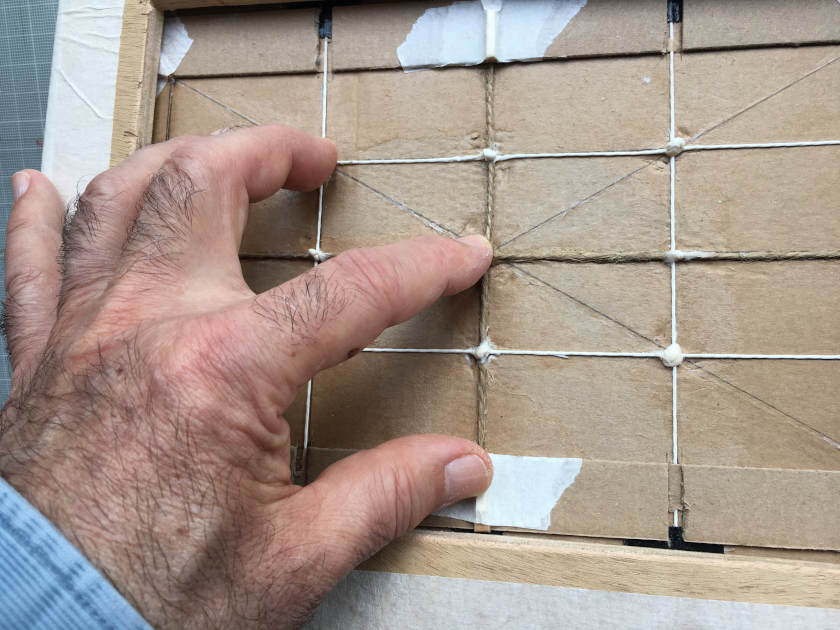
As Sifianos used drawing with a small format drawing (‘the size of my hand’), the process was relatively fast (‘I spent much more time trying to finance the project’ he admits). Post-production and voice acting was done remotely. The whole film process lasted 2 years, with the animation chunk being 4-6 months period.
“This kind of film is not scheduled rationally, but intuitively. I worked on a theme and tried variations, like in music.” Research on the ideas and materials implied by the theme still took place beforehand. “Sometimes I did animations directly, at other times I was preparing videos”. Watching the film you see at a point a hand rolling a pencil, denoting the presence of the creator. “This animation was not intentional. I copied several times the same photo of my hand and, assembling the drawings, I discovered that accidental movement gives the feeling of somebody who is embarrassed. This feeling matched with the scene and I used it”.
A storyboard (a collection of sketches and photographs) only came later as a production bible and marketing tool to present and finance the project. “I always worked by association of ideas. They come spontaneously, often in the morning under the shower! I think it's useful to replace storyboards with showers!” The Blind Writer features the words written on the screen, which introduce both the questions and the answer. “It was there to remind me of the writing experience. Animated handwriting is something alive. I remember the films on Alexander Pushkin by Andrei Khrzhanovsky, where Pushkin’s writings become waves of the sea… On the other hand, writing is also drawing: drawing letters”.
His voice actors, a man and a woman, both utter the words in an musically accented tone. “Even though we recognize a male and a female voice, my voices are not gendered but human voices”. Everything needs to participate in everything else. “ Who is the blind writer? The old man we see? The man and woman we hear and see the faces? The hand who writes or the painter who sketches the hand who is writing? The director of this film, or the spectator? I am interested in our blindness, its reasons and consequences, not on the destiny of an individual. The blind creator is the human in general; everyone”.
Jan Švankmajer (Possibilities of a Dialogue), Norman McLaren (Neighbours), and Charlie Chaplin, the eternal underdog and our conscious soul all parade in The Blind Writer. Is this a call to dialogue and to invite a look to the people mostly in need of it?
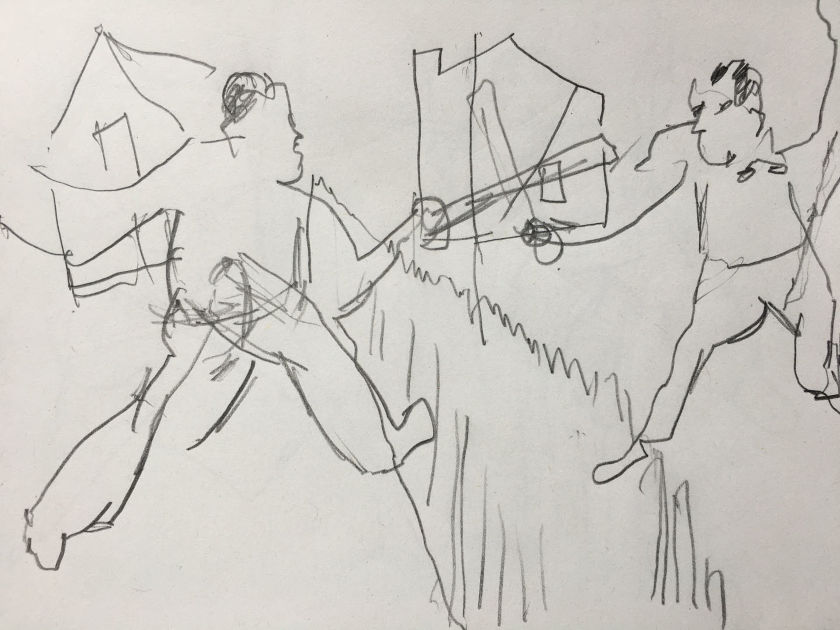
“They do give references; they express thoughts clearly and facilitate the process to understand the culture, the world where we are” Sifianos tells. “I think that some scenes, or some notes as Beethoven’s four first notes of the fifth Symphony, (pa-pa-pa-pam) are so representative of a content that becomes universal references. In the same way that an ox head becomes Aleph, the letter A. And A, becomes a tool. Similarly, when Charlie Chaplin eats his shoes and shoelaces with “polite manners” this is an emblematic representation of a thought, a kind of cinematographic ideogram, which from now on belongs to humanity. Who was the painter who first drew the ox’s head which became A?
Charlie Chaplin never eats peelings instead of orange, but he could do it. It is the thought behind who is interesting and I try to find a universal representation; the idea that we eat the peelings and throw the essential, the fruit, when we valorise appearance more than essence”. This is an ancient question, up to the time when the Greek sophist Protagoras defended the thesis that “man is the measure of all things”, going in contrast with previous cosmological solutions. “It is the skilful speaker now who dictates what must be considered as true in our society of communication” Sifianos mentions. He voices his deep concern about this regime of appearances (‘slander, slander, there will always be something left’), and clings to a deepening of the essence in our human understanding, the blind writer being the first step.
The Blind Writer’s aesthetics seem to encompass dance, music and singing as well. “I think all that fits together” Sifianos explains “The spontaneous, poetic way of thinking functioning by association of ideas and forms, more than cause and effect method, is something that I defend”. If consequences are not linear but qualitative (as the philosopher George Politzer described) and the boiling water becomes vapor, perhaps our own stance towards things should differentiate accordingly. The classical Greek ‘metron’ (measure) which guards from hybris and excess should actually lead to a more harmonious co-existence. “Nature is structured on a predator-prey model”, he says. “Human civilization has to go past this model; otherwise, the ‘liberal’ law of the stronger, the law of the jungle will continue in the same way. Humans are clever, and developed enough power to destroy - many times - the earth. Will they be clever enough to find again the need of measure (metron) and ecologic and social harmony? That is the question of the blind writer” Sifianos explains.
The director had something himself to learn during the making of this 2D animation film, starting from the way of animating characters and moving to the way the mind itself works. “During many years I was teaching the classical law, that when you have the weight on a foot which is on the ground, this foot must not move if you want to avoid a sliding of your character. This law won’t function in the same way in “blind” animation. In fact, when you have a lot of vibrating lines, some of them are more precise and at better position than others. I realized that visual perception is like hearing: it chooses. When you are interested in hearing someone talking in a noisy place, your perception distinguishes what is interesting, isolates and ignores the rest. Visual perception does the same: when we distinguish a few lines in the right place corresponding to the gravity and elasticity of a movement following our experience, our perception chooses these lines as references, and considers what remains as noise. Without vibration, perception is more comfortable, yet in a vibrant context our perception actively chooses”.
He calls this ‘blind’ animation a kind of impressionistic animation; the Impressionists' notion of complimentary colors in painting is here paralleled by the complementary lines, placed one beside the other and get connected in our mind (his thoughts to be further expanded in his presentation at “10èmes rencontres professionnelles de Fontevraud”). “Paradoxically, we like this process of participation. We feel creators; we like to understand by ourselves”. The Blind Writer will travel the international festival circuit, and, hopefully, its pertinent questions as well on a film that is very particular, pressing yet still sensitive on issues too familiar to disregard.
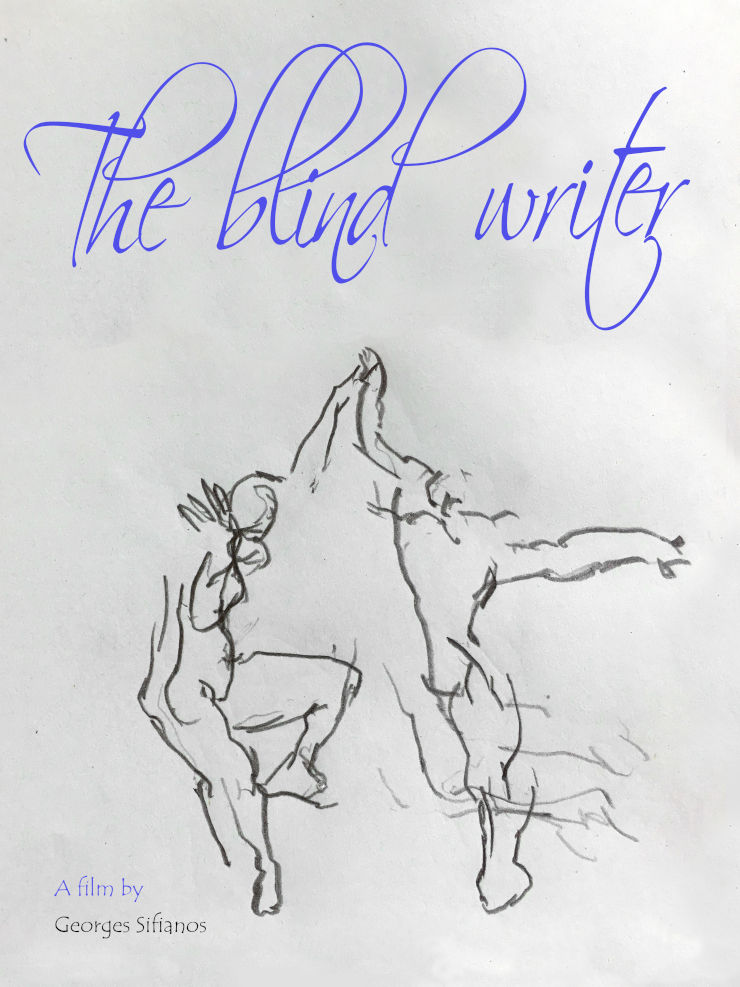
About Georges Sifianos
Georges Sifianos, born in Greece, holds a PhD in animation aesthetics from the University of Sorbonne. He is a filmmaker and professor emeritus of animation at ENSAD in Paris, where he founded the Department of Animation Studies in 1995. He has lectured worldwide including universities in Europe, India, Korea, Japan and China.
As a member of PSL academic research group, SACRe (EA 7410), he is interested in the renewal of forms of animation cinema, particularly from the point of view of cognitive science. The blindfolded animation approach employed in “The blind writer” is part of this research. His other recent research interest concerns animation forms found on the Parthenon’s Frieze. His book Aesthetics of Animated Cinema received the 2014 "McLaren - Lambart" award for the best academic book by the Society for Animation Studies and the "Hemingway Grant" in 2015.
- Georges Sifianos on the web, and vimeo




